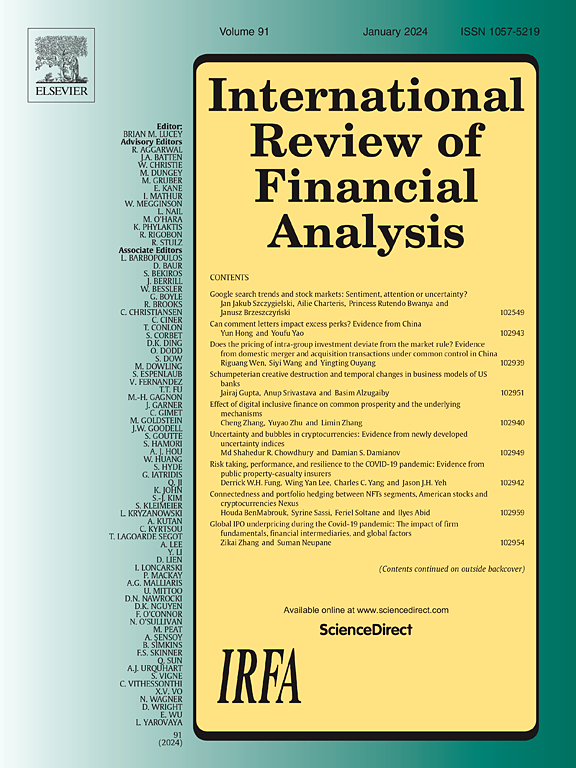Are big banks too-big-to-fail? An investigation into the size premium and scale economies for European banks
IF 9.8
1区 经济学
Q1 BUSINESS, FINANCE
引用次数: 0
Abstract
We investigate a “size anomaly” in European banking—namely, whether very large banks earn significantly lower risk-adjusted stock returns than smaller peers, even when those peers are systemically important. To better understand this phenomenon, we construct a bank-specific size factor using principal component analysis on residual stock returns and introduce a new measure of economies of scale, based on Data Envelopment Analysis (DEA) and proximity to the Most Productive Scale Size (MPSS). A key innovation of our study is the double-sorting of banks by size and scale elasticity. We find that excess return differentials are primarily concentrated among large banks operating under increasing returns to scale, and that accounting for scale elasticity reconciles the size anomaly. These results suggest that investors may attribute lower required returns to operational efficiencies rather than solely to implicit too-big-to-fail (TBTF) guarantees. Our findings challenge the view that size alone is a reliable proxy for systemic risk and underscore the importance of distinguishing scale-driven efficiency from TBTF moral hazard. The evidence has direct implications for regulatory policy, particularly in the context of post-crisis debates on size restrictions and systemic risk oversight.
大银行大到不能倒吗?欧洲银行规模溢价与规模经济研究
我们研究了欧洲银行业的“规模异常”——也就是说,大型银行的风险调整后股票回报率是否明显低于规模较小的同行,即使这些同行具有系统重要性。为了更好地理解这一现象,我们利用剩余股票收益的主成分分析构建了一个特定于银行的规模因子,并基于数据包络分析(DEA)和接近最生产规模规模(MPSS)引入了一个新的规模经济衡量标准。本研究的一个关键创新是对银行的规模和规模弹性进行双重分类。我们发现,超额收益差异主要集中在规模收益递增的大型银行中,并且考虑规模弹性可以调和规模异常。这些结果表明,投资者可能将较低的要求回报归因于运营效率,而不仅仅是隐性的“大到不能倒”(TBTF)担保。我们的研究结果挑战了规模本身是系统性风险的可靠指标的观点,并强调了区分规模驱动效率和TBTF道德风险的重要性。这些证据对监管政策有直接影响,尤其是在危机后关于规模限制和系统性风险监管的辩论背景下。
本文章由计算机程序翻译,如有差异,请以英文原文为准。
求助全文
约1分钟内获得全文
求助全文
来源期刊

International Review of Financial Analysis
BUSINESS, FINANCE-
CiteScore
10.30
自引率
9.80%
发文量
366
期刊介绍:
The International Review of Financial Analysis (IRFA) is an impartial refereed journal designed to serve as a platform for high-quality financial research. It welcomes a diverse range of financial research topics and maintains an unbiased selection process. While not limited to U.S.-centric subjects, IRFA, as its title suggests, is open to valuable research contributions from around the world.
 求助内容:
求助内容: 应助结果提醒方式:
应助结果提醒方式:


